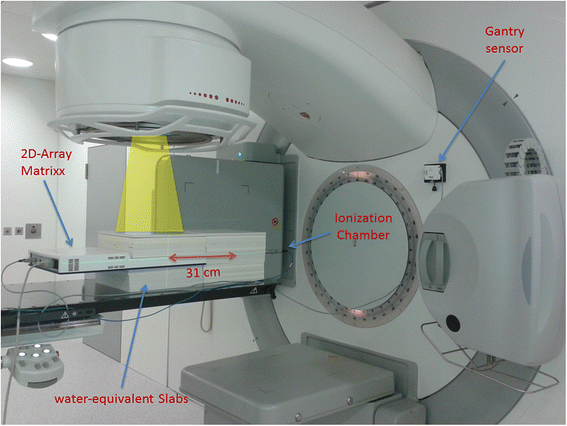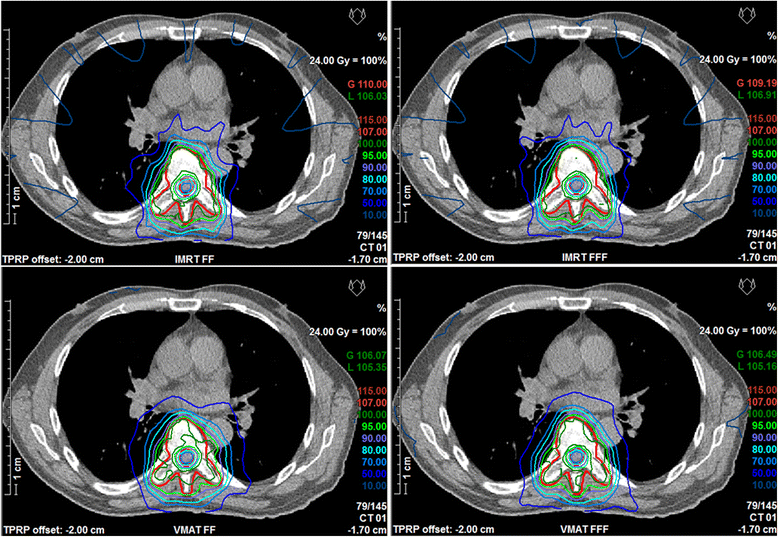Re-irradiating spinal column metastases using IMRT and VMAT with and without flattening filter - a treatment planning study
- PMID: 26932561
- PMCID: PMC4774147
- DOI: 10.1186/s13014-016-0603-0
Re-irradiating spinal column metastases using IMRT and VMAT with and without flattening filter - a treatment planning study
Abstract
Background: The aim of this study was to investigate the potential of the flattening filter free (FFF) mode of a linear accelerator for intensity modulated radiation therapy (IMRT) and volumetric modulated arc therapy (VMAT) for patients with in-field recurrence of vertebral metastases.
Methods: An Elekta Synergy Linac with Agility™ head is used to simulate the treatment of ten patients with locally recurrent spinal column metastases. Four plans were generated for each patient treating the vertebrae sparing the spinal cord: Dual arc VMAT and nine field step and shoot IMRT each with and without flattening filter. Plan quality was assessed considering target coverage and sparing of the spinal cord and normal tissue. All plans were verified by a 2D-ionisation-chamber-array, peripheral doses were measured and compared to calculations. Delivery times were measured and compared. The Wilcoxon test was used for statistical analysis with a significance level of 0.05.
Results: Target coverage, homogeneity index and conformity index were comparable for both flat and flattening filter free beams. The volume of the spinal cord receiving the allowed maximum dose to keep the risk of radiation myelopathy at 0 % was at the same time significantly reduced to below the clinically relevant 1 ccm using FFF mode. In addition the mean dose deposited in the surrounding healthy tissue was significantly reduced in the FFF mode. All four techniques showed equally good gamma scores for plan verification. FFF plans required considerably more MU per fraction dose. Regardless of the large number of MU, out-of-field point dose was significantly lower for FFF plans, with an average reduction of 33 % and mean delivery time was significantly reduced by 22 % using FFF beams. When compared to IMRT FF, VMAT FFF offered even a reduction of 71 % in delivery time and 45 % in peripheral dose.
Conclusions: FFF plans showed a significant improvement in sparing of normal tissue and the spinal cord, keeping target coverage and homogeneity comparable. In addition, delivery times were significantly reduced for FFF treatments, minimizing intrafractional motion as well as strain for the patient. Shortest delivery times were achieved using VMAT FFF. For radiotherapy of spinal column metastases VMAT FFF may therefore be considered the preferable treatment option for the combination of Elekta Synergy Linacs and Oncentra® External Beam v4.5 treatment planning system.
Figures



References
Publication types
MeSH terms
LinkOut - more resources
Full Text Sources
Other Literature Sources
Research Materials

